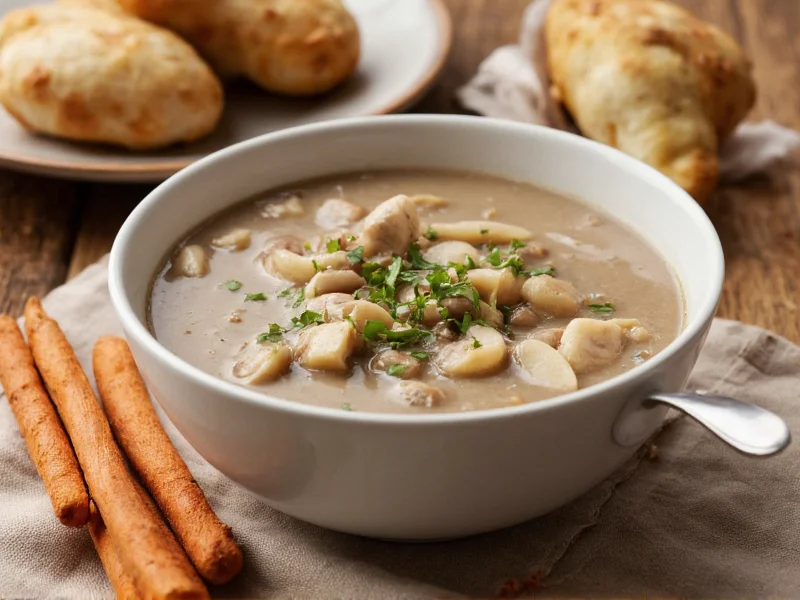The Art of Crafting Exceptional Wild Mushroom Soup
Creating an outstanding wild mushroom soup requires understanding both the ingredients and techniques that transform simple forest finds into a gourmet experience. Unlike standard button mushroom soups, wild varieties offer complex flavor profiles that can elevate your cooking to restaurant quality. The key difference lies in the terroir—wild mushrooms absorb nutrients from their natural environments, developing unique earthy notes impossible to replicate with cultivated varieties.
Understanding Wild Mushrooms: Safety First
Before making wild mushroom soup, proper identification is non-negotiable. Approximately 100 mushroom species are poisonous, with some causing severe illness. Never consume mushrooms you cannot positively identify. The safest approach combines three verification methods: visual characteristics, spore prints, and expert consultation. When foraging wild mushrooms for soup, stick to beginner-friendly varieties like:
| Mushroom Variety | Distinctive Features | Flavor Profile | Availability Season |
|---|---|---|---|
| Chanterelles | Vibrant yellow-orange, funnel-shaped | Peachy, apricot-like aroma | Summer to early fall |
| Morels | Honeycomb texture, conical shape | Nutty, earthy depth | Spring |
| Porcini | Thick stem, brown cap | Meaty, woodsy flavor | Late summer to fall |
| Oyster Mushrooms | Shell-shaped, grow in clusters | Mild anise notes | Year-round (cultivated) |
Essential Ingredients for Perfect Wild Mushroom Soup
The magic of wild mushroom soup comes from balancing the mushrooms' natural flavors without overwhelming them. For a 4-serving batch, you'll need:
- 1.5 lbs mixed wild mushrooms (chanterelles, morels, or porcini)
- 2 tbsp unsalted butter plus 2 tbsp olive oil
- 1 large shallot, finely diced
- 2 garlic cloves, minced
- 4 cups quality vegetable or chicken stock
- 1/2 cup dry sherry (optional but recommended)
- 1/2 cup heavy cream (or coconut milk for dairy-free)
- Fresh thyme and rosemary
- Salt and white pepper to taste
Step-by-Step Preparation Guide
Follow these professional techniques to maximize flavor while preserving the delicate nature of wild mushrooms:
- Cleaning properly: Never soak wild mushrooms. Use a soft brush to remove debris, wiping with a damp cloth only if necessary. Excess water dilutes flavor.
- Dry sauté first: Heat mushrooms in a dry pan over medium heat until they release moisture and it evaporates. This concentrates flavor better than oil-frying initially.
- Layer cooking: Remove mushrooms, then sauté shallots in butter/oil until translucent. Add garlic, cook 30 seconds, then return mushrooms to pan.
- Deglaze: Pour in sherry, scraping browned bits from pan bottom—this builds foundational flavor.
- Simmer gently: Add stock and herbs, simmer 15 minutes (not boiling, which toughens mushrooms).
- Finish: Blend 2/3 of soup until smooth, return to pot with remaining chunks. Stir in cream off-heat.
Nutritional Benefits of Wild Mushroom Soup
Wild mushroom soup offers significant advantages over cultivated varieties. Research shows wild mushrooms contain higher concentrations of:
- Beta-glucans: Boost immune function more effectively than store-bought mushrooms
- Ergothioneine: A powerful antioxidant rarely found in other foods
- Vitamin D: Wild varieties exposed to sunlight contain up to 10x more vitamin D
- Minerals: Higher selenium, zinc, and copper content supports metabolic health
A single serving provides approximately 120 calories, 6g protein, and delivers 30% of your daily copper needs—essential for energy production and nervous system function.
Avoiding Common Wild Mushroom Soup Mistakes
Even experienced cooks make these errors when preparing wild mushroom soup:
- Over-blending: Pureeing all mushrooms destroys texture. Reserve 30% for chunky texture.
- High heat cooking: Boiling breaks down delicate mushroom compounds. Keep below 180°F after adding cream.
- Insufficient seasoning: Wild mushrooms require 25% more salt than cultivated varieties to bring out flavors.
- Wrong acid balance: A splash of lemon juice or sherry vinegar at the end brightens earthy notes.
Serving Suggestions and Pairings
Elevate your wild mushroom soup experience with these professional pairings:
- Bread: Crusty sourdough or walnut bread complements earthy notes
- Wine: Pinot Noir or dry Riesling cuts through richness
- Garnishes: Fresh chives, truffle oil, or toasted pine nuts add texture
- Main course pairing: Roasted chicken or seared scallops create balanced meals
For restaurant-quality presentation, serve in pre-warmed bowls with a swirl of cream and microgreens.
Storage and Reheating Best Practices
Proper storage maintains wild mushroom soup's delicate flavor profile:
- Cool completely before refrigerating (within 2 hours of cooking)
- Store in airtight containers for up to 3 days
- Freeze in portion-sized containers for up to 3 months (cream-based versions separate slightly but regain texture when reheated)
- Reheat gently over low heat, never boiling—stir constantly and add splashes of stock if needed
Never refreeze previously frozen soup, as this degrades both texture and flavor.
Frequently Asked Questions
Can I use dried wild mushrooms for soup?
Yes, dried wild mushrooms work exceptionally well in soup. Rehydrate them in warm water for 20 minutes, then use both the mushrooms and strained soaking liquid in your recipe. Dried porcini particularly enhance depth of flavor.
How can I tell if wild mushrooms are safe for soup?
Only use mushrooms positively identified by an expert mycologist. Avoid any with white gills, a skirt on the stem, or a bulbous base—common traits of poisonous varieties. When in doubt, throw it out.
Why does my wild mushroom soup taste bitter?
Bitterness usually comes from overcooking or using slightly past-prime mushrooms. Add a pinch of sugar or splash of acid (lemon juice/vinegar) to balance flavors. Never use mushrooms with dark spots or slimy texture.
What's the best thickener for wild mushroom soup?
Instead of flour, try blending a portion of the cooked mushrooms for natural thickening. A small potato added during simmering also creates creamy texture without masking mushroom flavors.
Can I make wild mushroom soup without cream?
Absolutely. For a dairy-free version, blend half the soup with cooked cauliflower or white beans. Coconut milk works well with stronger-flavored mushrooms like morels but may overpower delicate chanterelles.











 浙公网安备
33010002000092号
浙公网安备
33010002000092号 浙B2-20120091-4
浙B2-20120091-4